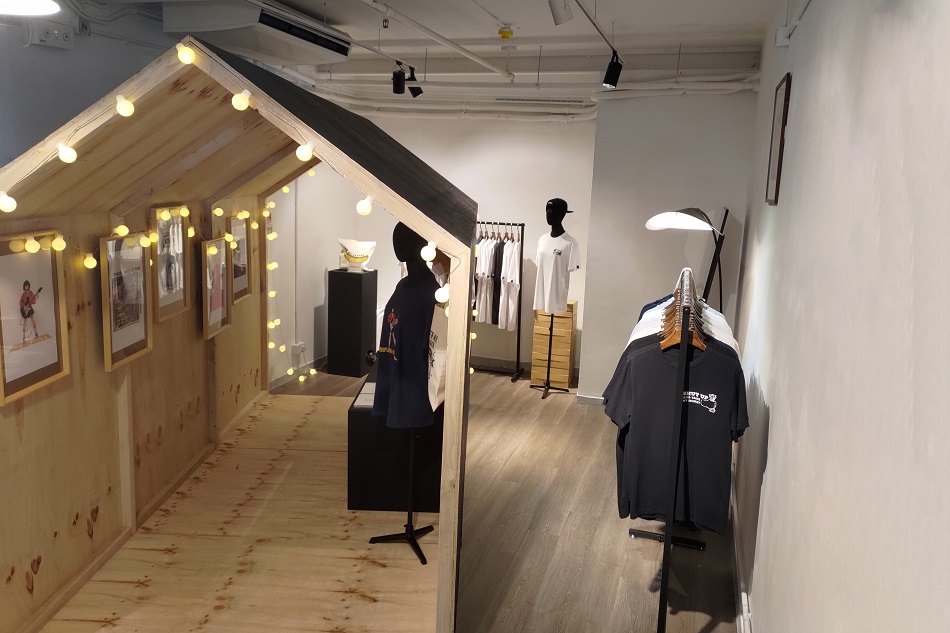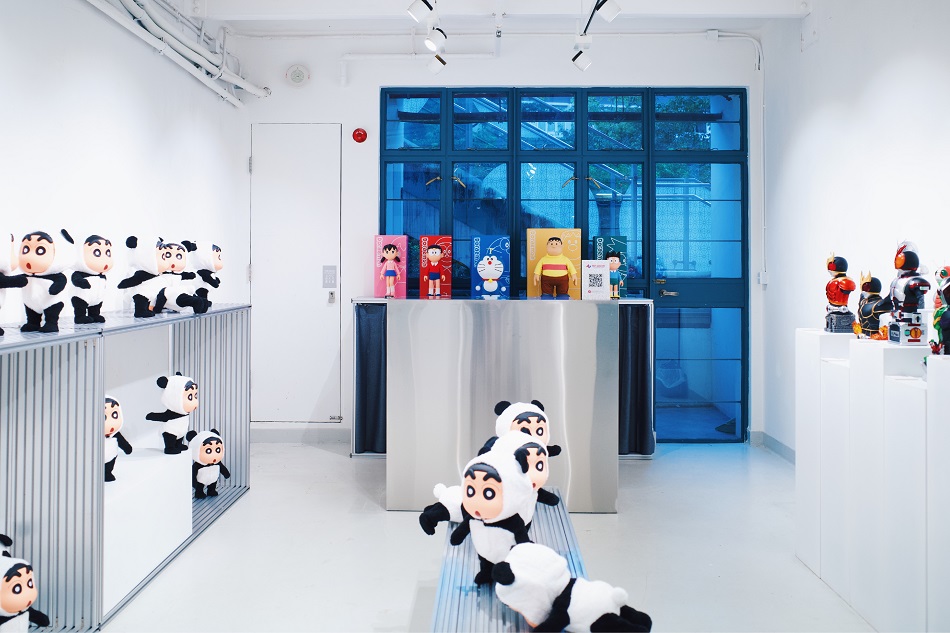Leisure & Culture #52
Holy for A Man, Wholly for A People
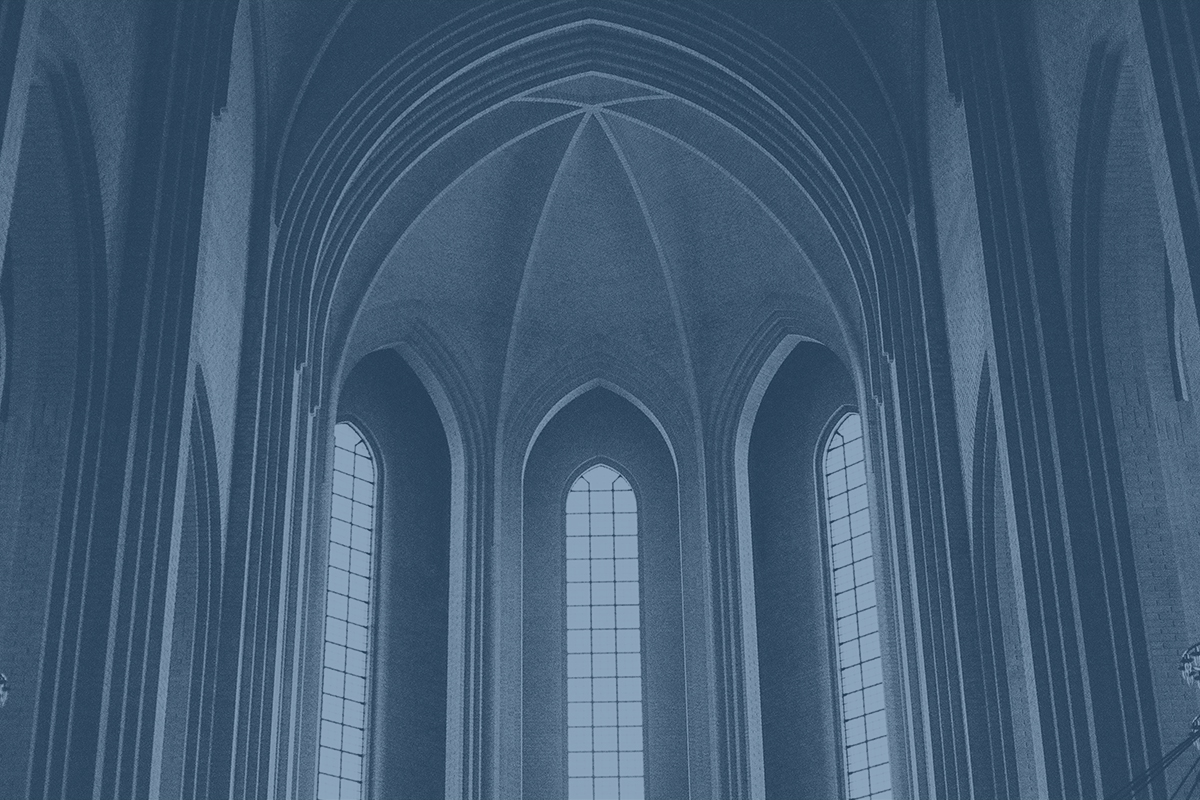
Text & Image by Kit Chan
Translated by Derek Leung
“Am I on another planet?” I murmured upon pushing open the door to enter, breathtakingly.
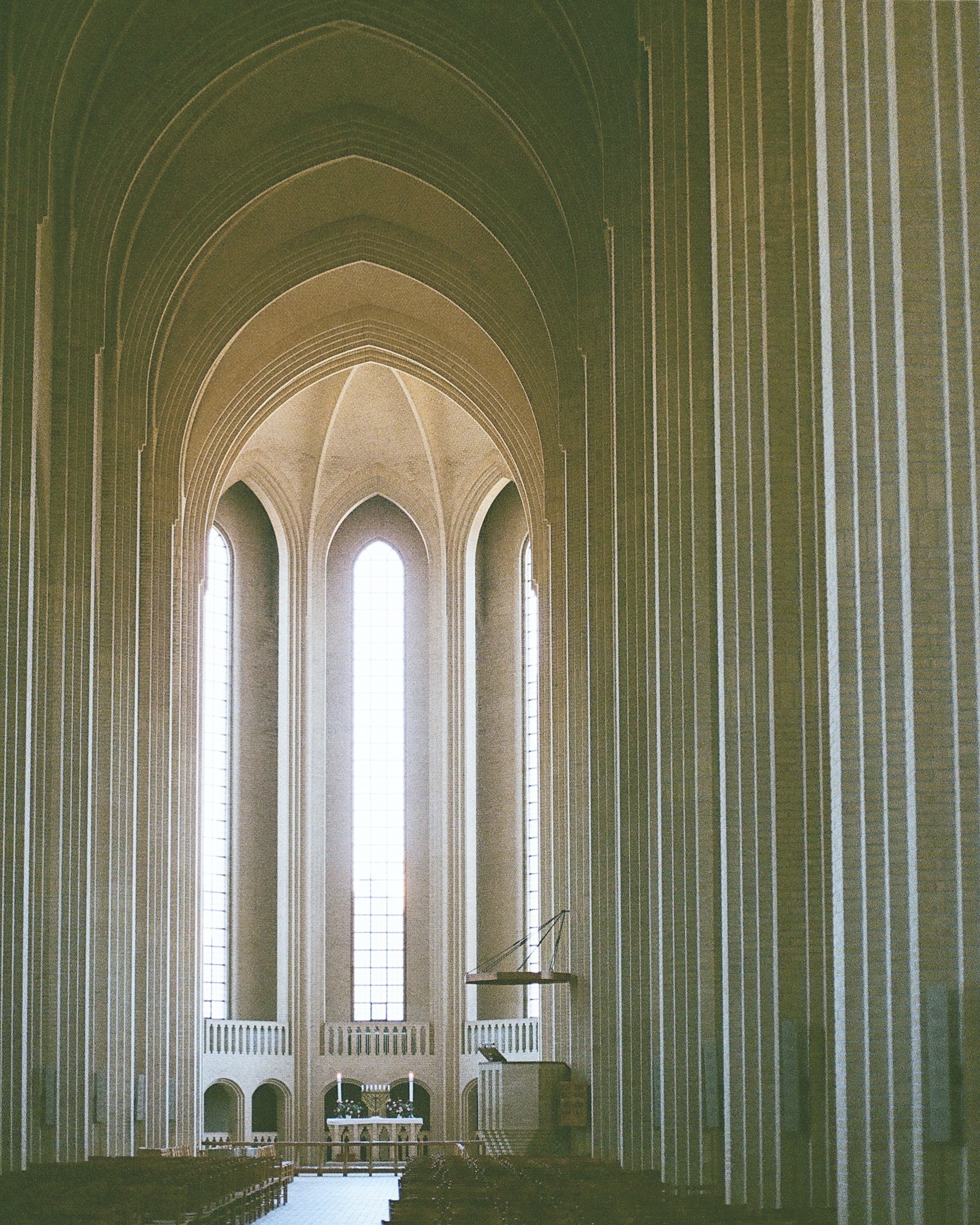
This is Grundtvigs Kirke in Copenhagen, Denmark, alias “The Organ Church”.
The architecture is considered unrealistically weird since it looks minimal and is nonetheless extremely complicated: a multitude of classical verticals and countless sky-height pillars of the Gothic architecture embraced in greenery manifest the incomparable sturdiness in sleek and subtle suppleness.
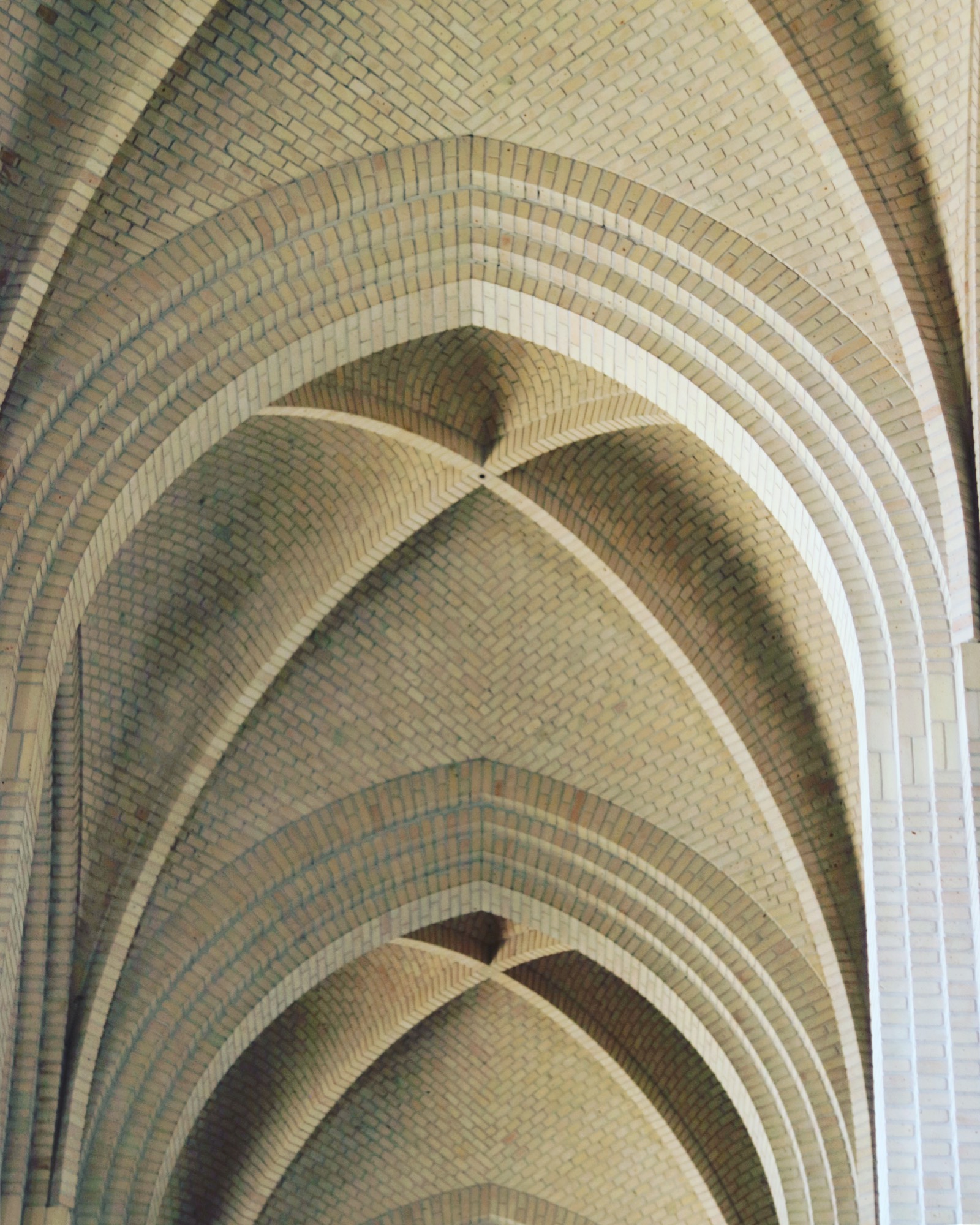
Looking like an indefinite stretch of two mirror images in entirety, the church is unusual and unique in its major use of light yellow bricks instead of a kaleidoscope of colourful stained glass in exchange for the overwhelming feeling of impurity and the ever-interesting flair of monotony.
In the church can you truly experience the contrast between your insignificance and the majestic mightiness composed by bricks.
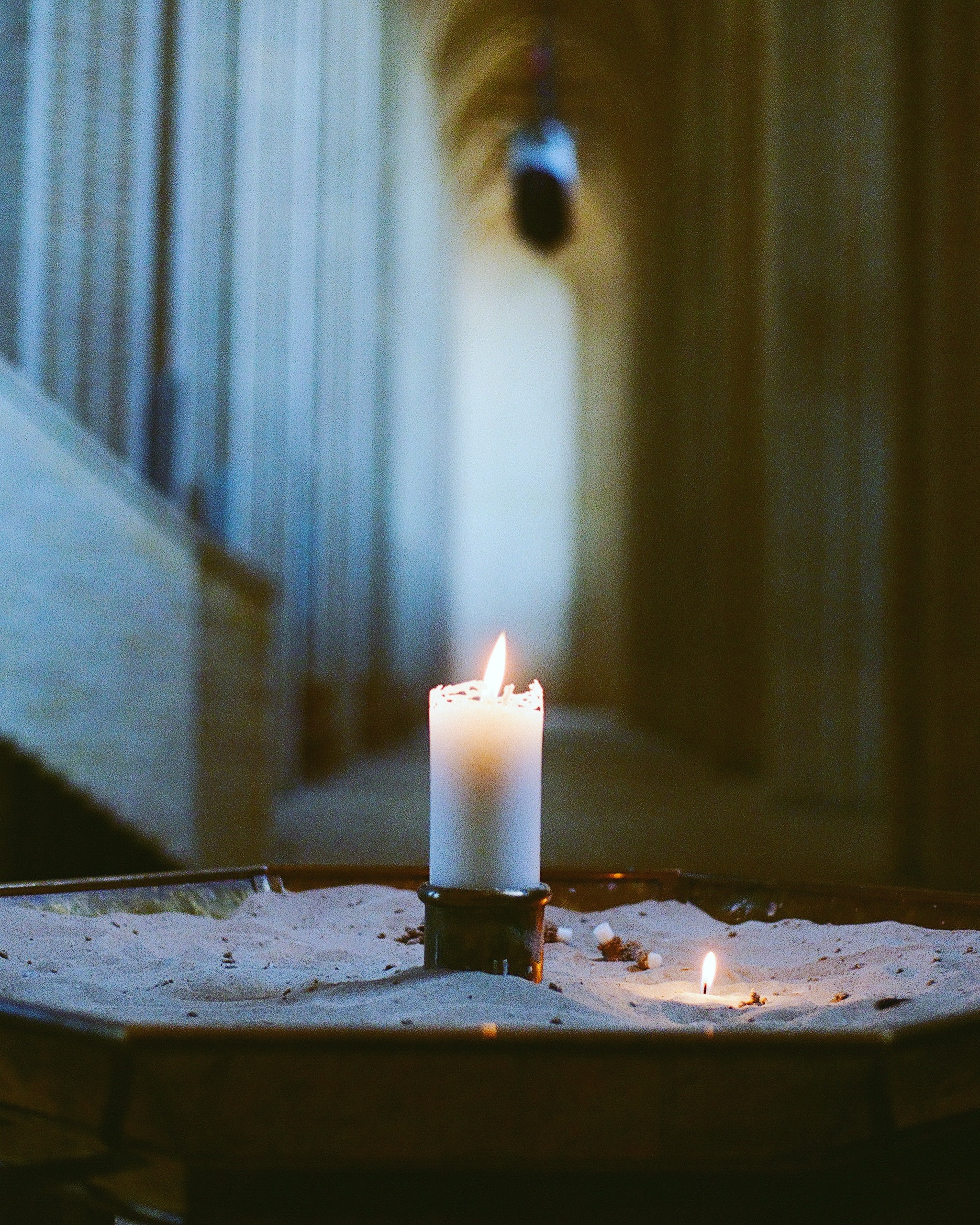
It is the power of design that brings such an unexpected dazzling building to reality. In 1912, a monument was planned to be built in commemoration of the 40-year death of Nikolaj FS Grundtvig (1783 - 1882), a highly acclaimed Danish theologist, politician, scholar cum poet in the 18th century who had far-reaching implication for the modern development of Denmark through advocacy of nationwide education, freedom and equality. The Danish government thus organized two competitions to collect design proposals from the general public.
Among all the monument design proposals, there was a sketch of a church designed by architect Peder Vilhelm Jensen-Klint, which is, without doubt, coupled with its construction cost 20 times more than other proposals’, beyond the government’s expectation.
However, the then judges were deeply convinced of the groundbreaking concept and therefore insisted on carrying out this proposal without hesitation to raise funds for the construction in the name of the church.
In force from 8th September, 1921, the date of birth of Grundtvig, with the opening of the completed western end of the nave in the winter of 1927, the construction of the epoch-making church was handled by Kaare Klint, son of original designer Jensen-Klint who passed away in 1930, and not complete until 19 years later in 1940 with the participation and assistance of grandson Esben Klint.
A perfect demonstration of the Expressionist church architecture, Grundtvigs Kirke sees its power in its composition of 6 million hand-burned yellow bricks together with the features of a 49-metre clock tower, the middle gables common in Danish churches as well as the sacred space with a special sci-fi touch made of lines and geometric combinations. Despite its monotone and simplicity, the church is a typical example of “less is more” and the cascade range of the bricks and columns will immediately show off its momentum whenever there is sunshine.
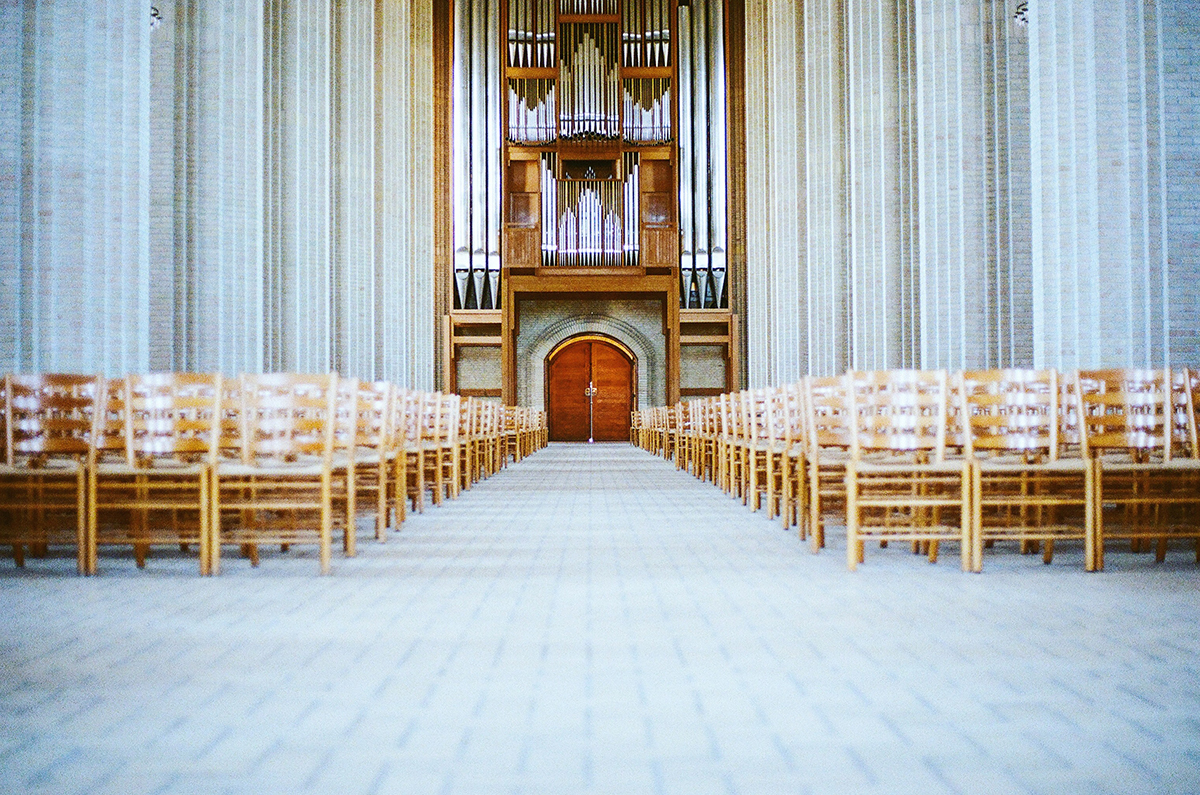
While the western façade of the church looks like a huge organ, an organ proper with as many as 4,052 pipes is installed in the interior to form the largest organ in Northern Europe as claimed.
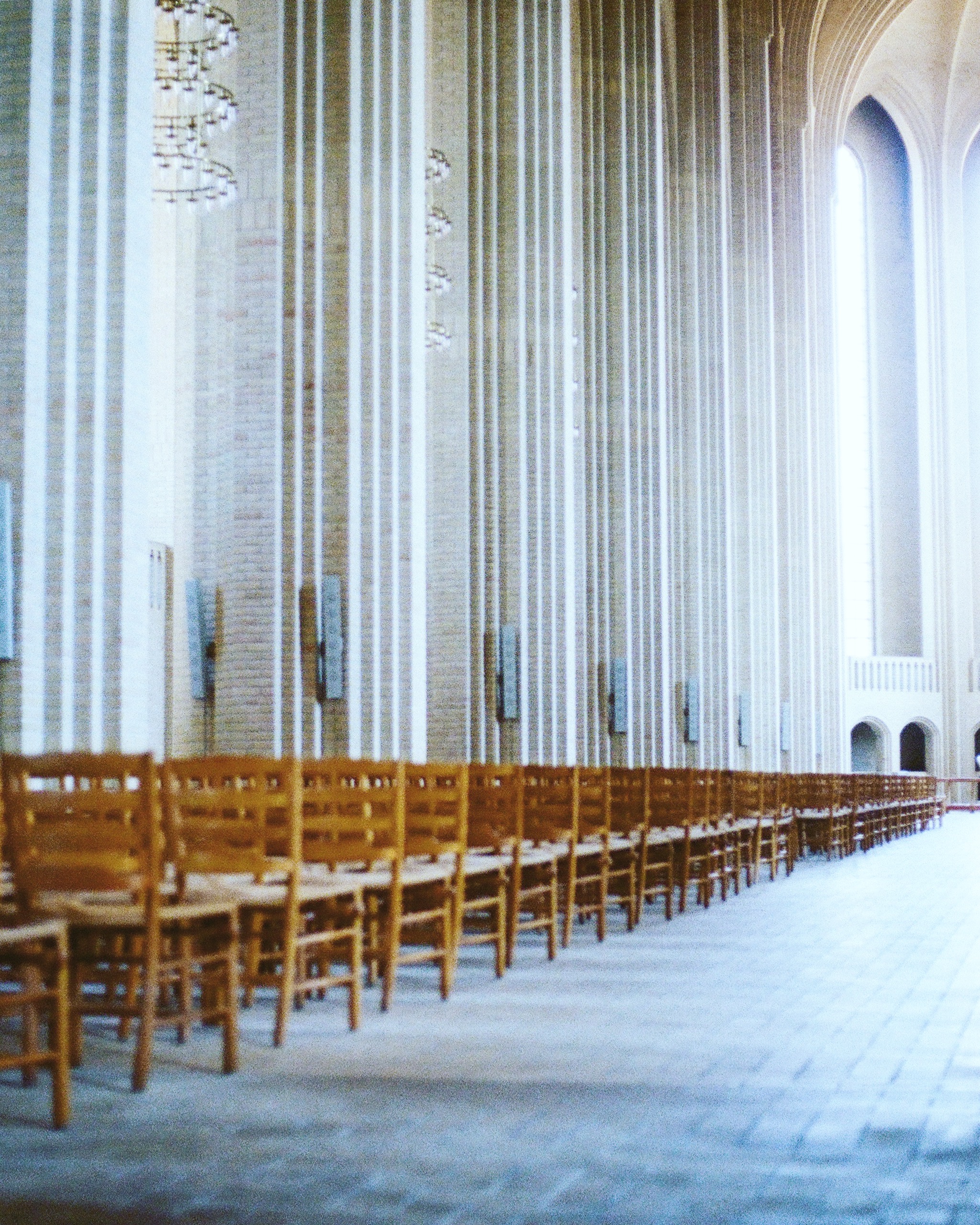
That said, the small items in the church are not the exception to draw your attention. Different from the regular rectangular benches found in the normal churches, individual beech church chairs designed by Kaare Klint, light and simple, are connected by long rods and arranged from the back end, rendering a modern interior for the church through such an iconic Nordic furniture design.
It should not be overlooked that Jensen-Klint also designed the residence adjacent to the church with similar colours and geometric structures, so that the architecture was well integrated into the neighbourhood.
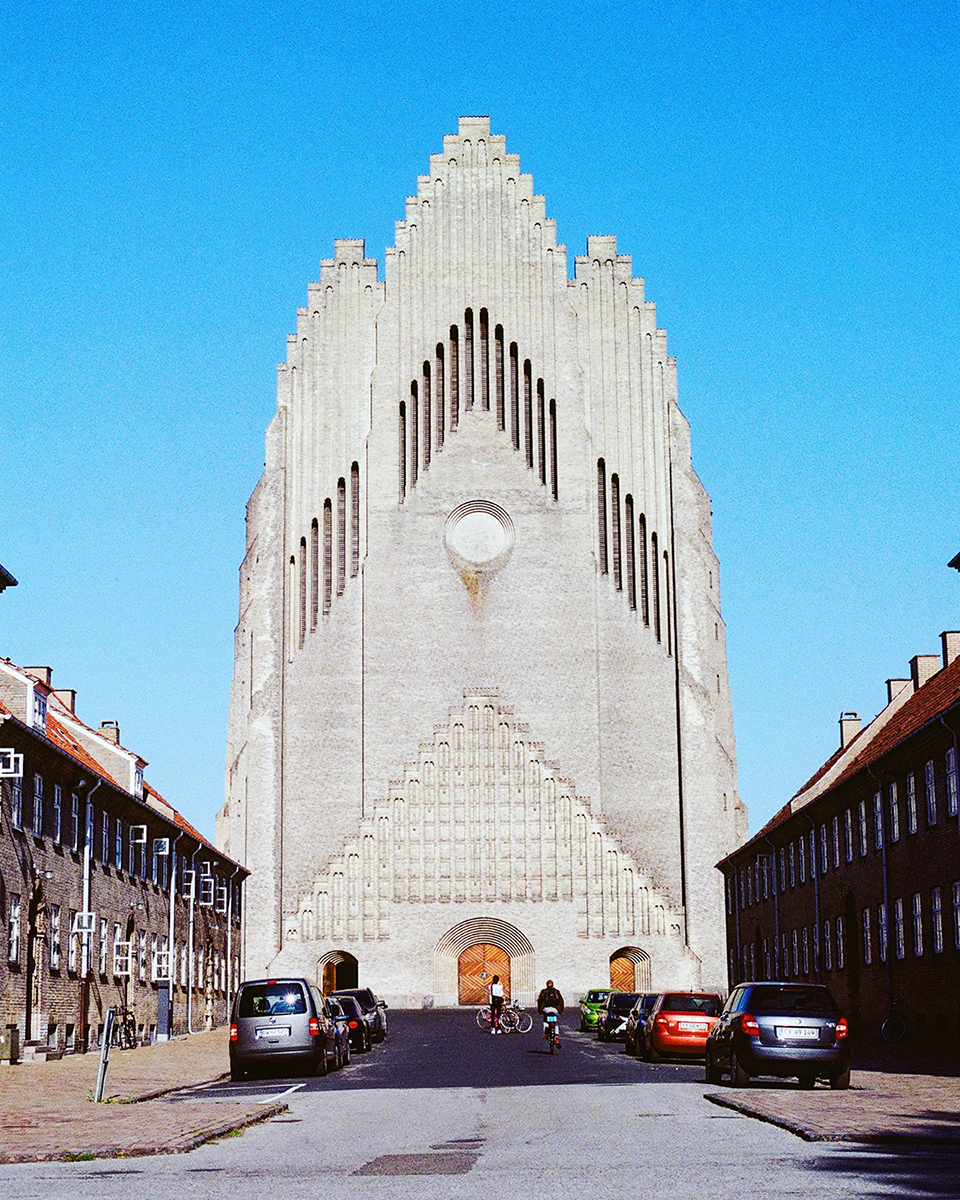
Established for slightly more than 80 years, the church is not known as a very popular tourist attraction due to its puberty in historic terms and its long distance from the city centre. However, it stands for a great man in the innermost recesses of every single Dane’s heart.
While it is worth taking time to maintain the design-led beauty, it is even more important to preserve an inspiring architecture initially built for a single man for the coming generations to experience.

